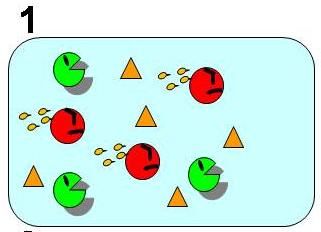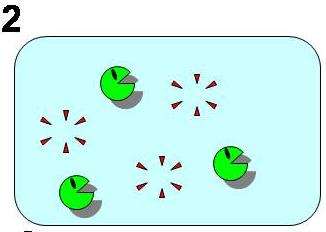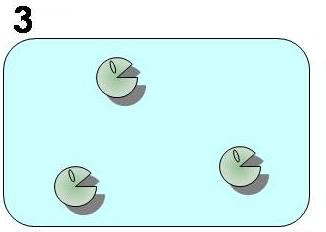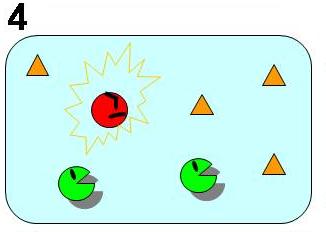Tokyo/Model
From 2007.igem.org
(Difference between revisions)
(→Model) |
(→Balanced Redifferentiation of E. coli !) |
||
| (64 intermediate revisions not shown) | |||
| Line 1: | Line 1: | ||
| - | == Model == | + | __NOTOC__ |
| + | ==[[Tokyo_Tech|Abstract]] [[Tokyo/Model|Concept & Model]] [[Tokyo/Requirements |Requirements]] [[Tokyo/Genetic circuit|Genetic_circuit]] [[Tokyo/Works|Works]] [[Tokyo/About our team|About_our_team]]== | ||
| - | |||
| - | ''' | + | ==Balanced Redifferentiation of E. coli ! == |
| + | ''' To follow [[Tokyo/Concepts|Pareto’s principle found in an ant society]], our model system must satisfy the three conditions shown in Fig. 1 to 4. In our model, all individual cells have the same genetic circuits but take either of stable state A (worker) or B (idler) depending on the surrounding circumstances as if they DIFFERENTIATE. They also change their states as if they DEDIFFERENTIATE and REDIFFERENTIATE so that the ratio of the two cell states is well balanced. | ||
| + | <!--''' ([http://en.wikipedia.org/wiki/Pareto_principle What is Pareto's principle? (Wikipedia)])--> | ||
| + | ---- | ||
| - | + | <br>'''As shown in Fig. 1, 2, 3, and 4, the conditions of the system changes as follows:'''<br><br> | |
| - | + | '''Bistable state ⇒ The removal of A (worker) ⇒ Dedifferentiation of B(idlers)⇒ Balanced Redifferentiation into A and of B''' | |
| - | The system is stable | + | <br><br> |
| + | [[Image:1state.JPG|thumb|210px|'''Fig. 1 Bistable state at balanced ratio of differentiated A and B''' <br>The system is stable when it contains both A (worker) and B (idler) "balanced" at certain ratio.|left]] | ||
| - | ''' | + | [[Image:2state.JPG|thumb|190px|'''Fig. 2 Removal of A''' <br>Now that A (worker) is removed, there is only B (idler) left.|center|left]] |
| + | [[Image:3state.JPG|thumb|190px|'''Fig. 3 Dedifferentiation of B''' <br>While after the removal of A (worker), B (idler) becomes unstable and ''dedifferentiates''.|center|left]] | ||
| + | <!--Node B detects the removal of node A from the system and knows that there is only node B left.--> | ||
| + | [[Image:4state.JPG|thumb|210px|'''Fig. 4 Balanced Redifferentiation''' <br>Some Dedifferentiated cells ''redifferentiate'' into A (worker) while the others go back to B (idler). Then the system becomes stable again with the balanced ratio of A and B.|center|left]] | ||
| + | <br> | ||
| - | + | <!--[[Image:concepts.jpg]]--> | |
| - | + | ||
| - | + | ||
| - | + | ||
| - | + | ||
| - | + | ||
| - | + | ||
| - | + | ||
| - | + | ||
Latest revision as of 03:46, 27 October 2007
Abstract Concept & Model Requirements Genetic_circuit Works About_our_team
Balanced Redifferentiation of E. coli !
To follow Pareto’s principle found in an ant society, our model system must satisfy the three conditions shown in Fig. 1 to 4. In our model, all individual cells have the same genetic circuits but take either of stable state A (worker) or B (idler) depending on the surrounding circumstances as if they DIFFERENTIATE. They also change their states as if they DEDIFFERENTIATE and REDIFFERENTIATE so that the ratio of the two cell states is well balanced.
As shown in Fig. 1, 2, 3, and 4, the conditions of the system changes as follows:
Bistable state ⇒ The removal of A (worker) ⇒ Dedifferentiation of B(idlers)⇒ Balanced Redifferentiation into A and of B



